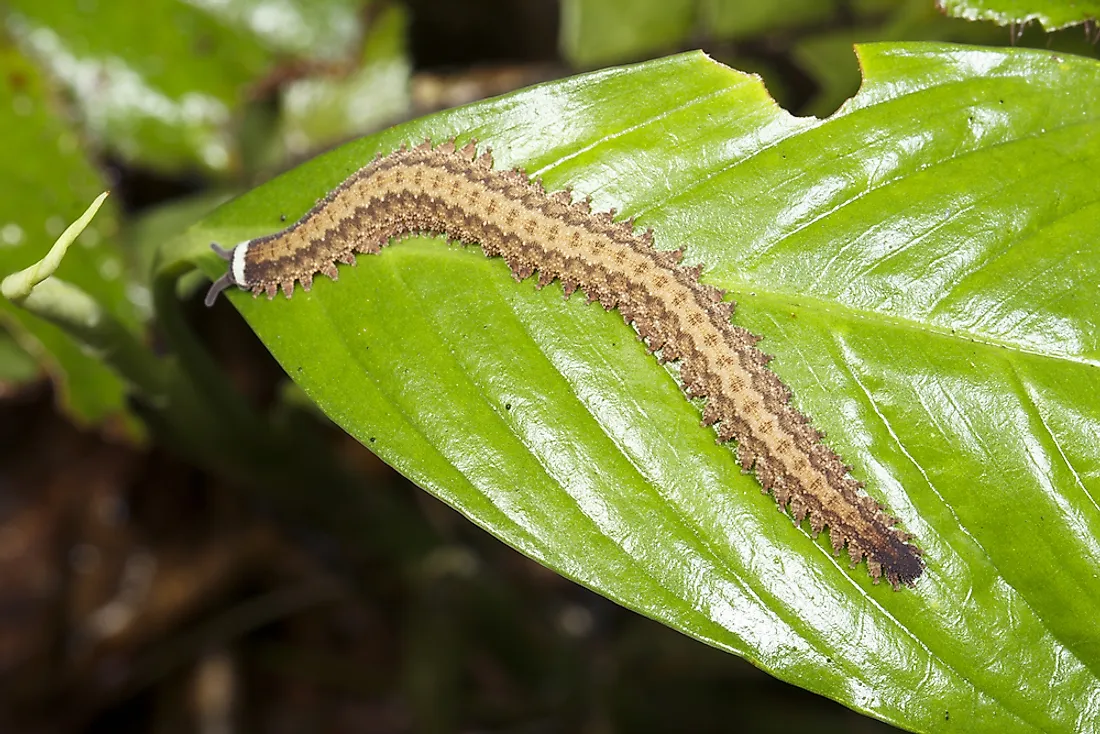What are Velvet Worms?

Velvet worms are amongst the strangest animals on earth. They are very attractive little creatures with a soft, velvety texture. Velvet worms are not exactly worms; they are called worms because they have worm-like appearance. They are unique invertebrates. Scientifically, there are two families of velvet worms namely Peripatopsidae and Peripatipae. Other names used to refer to velvet worms interchangeably are peripatus and onychophorans. The Peripatus has been in existence for about 500 million years since the Cambrian period.
Physical Description
The velvet worms grow to about 0.5-20 cm; their average length is 5 cm. They are colorful creatures that exhibit a range of colors such as purple, orange, red, green, grey, blue, and brown. The worms have 14 or more pairs of unjointed legs. They have a flattened structural body with unstructured body appendages called oncopods. The body parts of the velvet worms are unspecialized with the head being only slightly different from the abdominal parts. The velvet worms have slime glands lying in the center of their bodies. The glands secrete milky-white slime used by the worms to ensnare their pray as well as for protective purposes. The body of the worms contains blood-like liquid which supplies the whole body with nutrients.
Habitat
Velvet worms live in moist environments especially under rotting logs, soil, or leaf litter. Most of them inhabit Australia which is popular for having about 48 species of peripatus. Other parts of the world that the velvet worms inhabit include Central and South America, Africa (equatorial West Africa and South Africa), Northeastern India, and Southeast Asia. Generally the velvet worms inhabit tropical and temperate habitats.
Behavior and Feeding Habits
The velvet worms feed on arthropods and invertebrates such as insects. They eat by making a hole into the victim’s body and then sucking the soft insides out. The saliva of the predators assists in the pre-digestion of the meal. The velvet worms move slowly which makes it difficult for prey to notice them. They are social animals that live and hunt in groups of up to 15 animals. Dominance among the velvet worms is through aggressive behavior. Whenever there is a kill, the dominant female must feed first, followed by all the females, males, then the young ones. Hunting of food normally occurs during the night.
Reproduction
The velvet worms have different ways of reproduction. They are famous for their curious mating behavior. Some of the Peridatus lay shelled eggs while others give birth to live young ones. The transfer of the sperm from the male to female is strangely unique. In some cases, the males deposit the sperm in a pit on the head of a Peridatus. Afterwards, contact with the female genitalia leads to a transfer of the sperm to them. On the other hand, there are some males who just leave a “packet” of sperm on a female’s body. Absorption of the sperm into the female’s body occurs through the skin. When the sperm gets inside the female’s body, they swim to the ovary where fertilization takes place. The velvet worms exhibit sexual dimorphism whereby the females are normally larger than the males.











